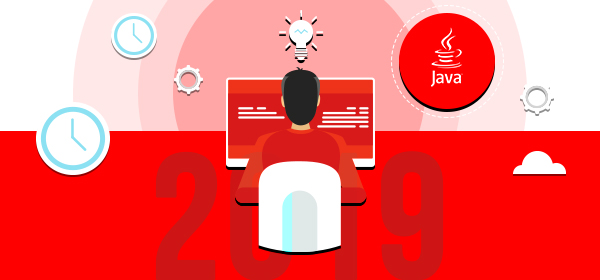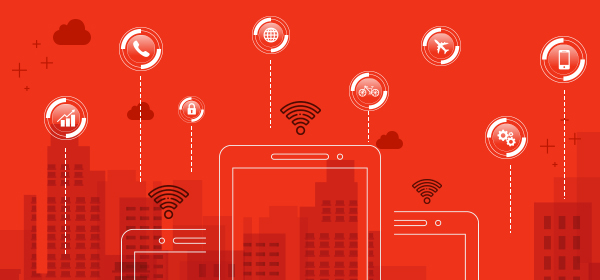Java has been ruling the virtual world of programming language and digital applications with over 10 billion devices carrying its power and also dominating the programming trends and maintaining it’s legacy from years now.
The language supports almost any system its used for, which is due to the exceptional platform-agnostic Java Virtual Machine.
Thanks to myriad innovations and updates, the technology has evolved to an incredible extent and grown more compatible, scalable and easy-to-use than before.
The past year saw tremendous boost in Java’s advancement as a technology and the evolution will hugely impact the Java developers’ community.
This year, Java is predicted to inject more innovative, polished and user-friendly trends into the mobile app development market. These new trends in Java and changes will further place profound influence on the application development process in UK (2023).
From open-source and peer-to-peer to wireless apps and Juxtapose, popular Java is set to surprise and add immense power to the world of application development.
Java dominates the top coding languages, as it’s trends have been among the fastest-growing and most commonly used for years now in UK.
When comparing the most popular languages that developers were learning year over year, we found that developers were learning JavaScript at the most rapid rate.
In 2018, 73% of developers said they knew JavaScript, up from 67% in 2017. This also makes JavaScript 2018’s most well-known language, compared to 2017.

In UK, Here is the trends to expect in Java technology in 2023:
1) The new evolved Java SE 10 release
The reason why Java as a programming language is fondly preferred by more than 12 million developers for mobile and cross platform app development is due to its ability to offer extensive libraries.
The rich libraries with many open-source tools and components help build powerful apps for enterprises and gamers.
The release of SE 10 version, which is created with collaborative efforts of OpenJDK community, contains a few great added features ready to revamp enterprise app development experience.
Due to its constant emphasis on innovative approach, with 21 billion cloud-connected JVMs, Java is effortlessly crowned as #1 choice among cloud-using developers.
2) RTSJ for embedded systems
James Gosling, the Java Creator, has couched innovative embedded Java application systems as the new frontier in mobile app development.
He promotes the idea of real-time Java apps where predictable execution of apps will precede over system’s speed, bandwidth and load-carrying capacity.
The embedded use thus will have real-time specifications for Java applications. RTSJ helps developers solve development-oriented issues such as run-time.
3) Changed subscription model
As Eclipse Foundation renamed itself to Eclipse Jakarta last year, expect significant changes in Oracle’s new subscription model that will cast some big impact on Java life in 2023.
This may come down a little rigorous, but the new anticipation around Java-powered Android and iOS app development infers that Oracle will no longer favor distributing free bug fixes and security patches unless it is for the latest version of OpenJDK.
Read also : App Development Cost- Design, Development, Deployment
According to the Gartner Analyst, Oracle will release new versions every 6 months now. She pointed out that users who want fixes and patches for applications running on Java 8 must purchase Oracle’s Java subscription.
Alternatively, they can try alternate distributors such as AdoptOpenJDK, Red Hat, Amazon, Azul or IBM.
Due to high annual subscription cost (which may touch $1 million), she anticipates that the new subscription model is likely to see organizations resort to alternate distributions, and opting for Java 11 or beyond will be rare.
4) Project Juxtapose effect
Project JXTA is Sun’s sensational open-source platform that has been generously embraced by Java developers. In future, Project Juxtapose is likely to influence development standards that will control web services development process.
When it comes to Java mobile app development, Java developers will thus be able to contribute the best of their potential for application development.
5) Influence on Scripting Languages
Jython and many other scripting languages are coded in Java. Jython, as the name hints, stems from original Python language. The changes in Java updates are going to affect these languages.
This is why Python, Perl and PHP have risen to top and become more compelling than ever, and more pressing.

6) Cloud computing gives new technical directions
The past year IBM’s feat of Red Hat acquisition triggered much anticipation around how cloud computing will play some role in changing enterprise mobile app development. Michael Remijan,
Senior enterprise Java developer and systems architect at the Federal Reserve Bank of St. Louis, suggested that 2023 will witness unique effect of enterprise-level adoption of cloud computing.
With IBM trying to gain some market chunk in cloud computing, the competitors Amazon, Google and Microsoft also strive fiercely in the similar space. Amazon, though, seems to dominate the field.
As cloud computing emerges to grow mainstream and tech leaders attempt to offer competitive cloud services, there will be a demand for vendor-specific iOS and Android app development skills that may challenge generic industry standards.
With this Michael goes to indicate that tech service companies will seek Amazon, Microsoft or IBM developers and not Jakarta EE developers.
7) Wireless Applications gain momentum
Since Nokia, one of the world’s largest mobile device makers, is determined to use open-source Symbian OS to build its future handsets, the concept of wireless Java application development is beginning to attract great attention especially because of its open-source offerings.
Usually, both Local and Network apps of Wireless Java mobile app development seem challenging as they are developed on single platform like Solaris or MS windows, and deployed on cell phone or PDA platform.
Here the real predicament strikes to developers at times when they go beyond the comfortable testing environment of emulators and attempt to test and evaluate their applications in a completely different environment enabled by a live wireless network. Now this is getting easier in future.
8) Demand for Java developers will burgeon
Java is a simple, static scripting language with fast and easy-to-maintain coding with little bugs. The language is also compatible with backward old versions, which means the old updates will still run and respond perfectly in the existing system even when new versions are released.
This is the greatest pro for businesses who feel relived at the idea of not having to rewrite the code after the introduction of its new version.
Read also : The Future of Biometric Authentication in Mobile Banking
Additionally, iOS and Android app development buffs appreciate its portability. With so much to gain from one language, Java developers will be high in demand and receive awesome perks for years to come.
9) The adoption of New Java versions will accelerate
According to Ivar Grimstad, a Java Champion and Principal Consultant at Cybercom Group in Sweden, the development industry is predicted to embrace the latest Java implementation of faster release cadence to a higher degree in 2023.
Ivar said that most organizations were startled a little as the new cadence was introduced and showed reluctance instead of direct acceptance wishing for corporate standard VM version.
But as container technology usage picks up, there will be more organizations flexing their requirements for mobile app development and embracing upcoming Java versions at rapid pace.
10) Java and IoT
The latest tech trends in Java mobile app development is the development IoT solutions since Java is powerful enough to foster IoT apps and promises bright future in this domain in UK.
Java offers ME platform for vendors to build secure enterprise IoT mobile applications using a language supported by Intel IoT platform.
Mike Milincovich at Eclipse Jakarta carries his strong belief that Oracle will help developers build a secure end-to-end data storage solution in 2023.
Final note
With advanced features and evolving mobile app development standard, Java continues to flourish in technology market. In the world of software programming language, Java has undeniably seized the top spot.
From the release of JDK 11 and Eclipse Foundation’s decision to encourage enterprise Java and rename it Eclipse Jakarta to Java’s IoT support and Wireless applications, technology trends in, and due to, Java are anticipated to grow in 2023.
The strong decision making from leaders and architect working inside the core Java system will have definitive impact on Java-enabled mobile application development process.
We are hoping to keep our eyes open for transformative effect of new Java trends on app development capabilities and agility in UK.













